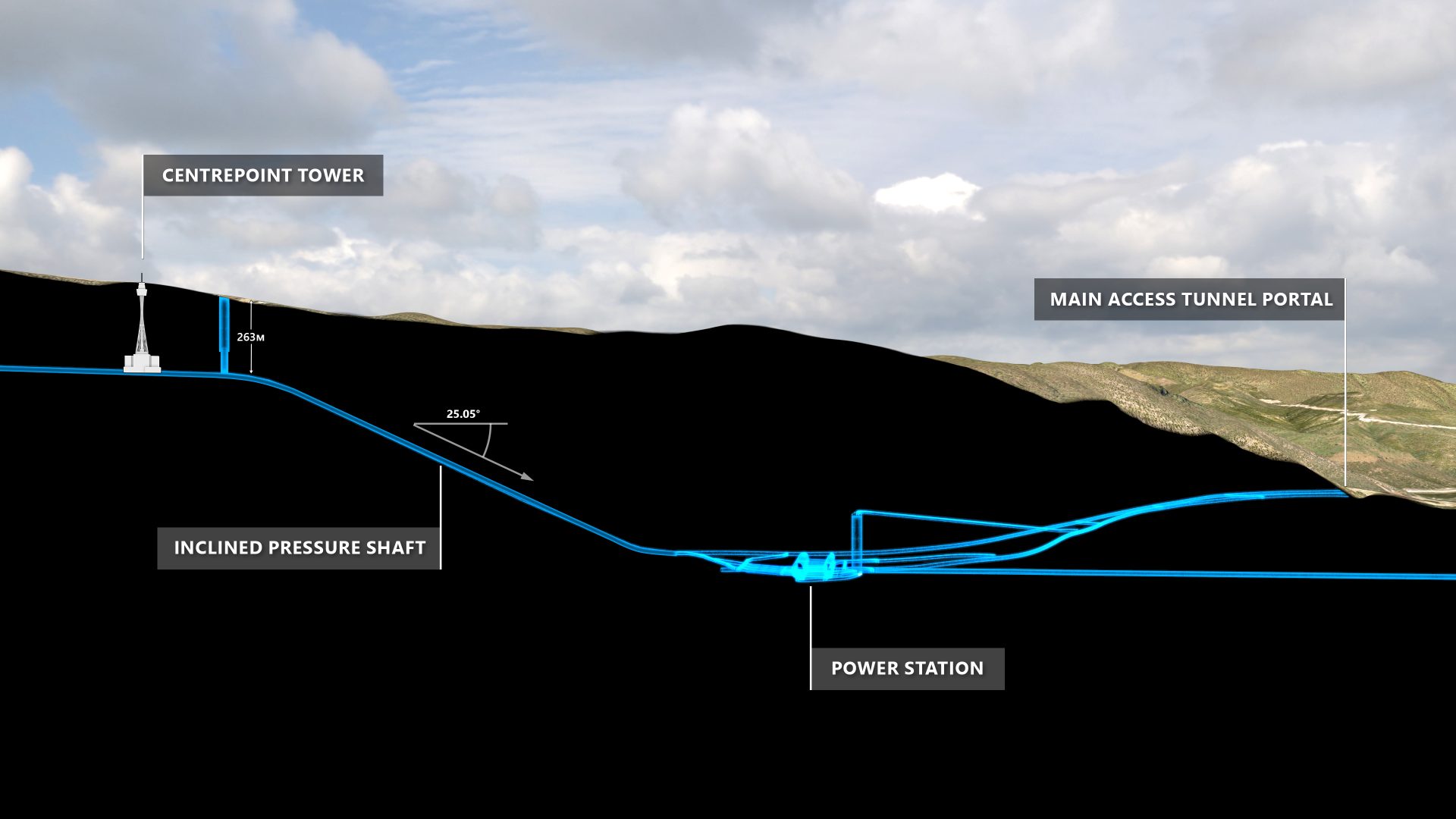May was a milestone month for the Snowy 2.0 team with the completion of the emergency, cable and ventilation tunnel, or ECVT – another vital step in the construction of Snowy Hydro’s new pumped-hydro expansion megaproject.
Snowy 2.0 senior project manager Rodd Brinkmann explains the next stage of the project from his base at Lobs Hole, as preparation for excavation for the underground power station cavern gets underway.
The ECVT is a 2.93 kilometre tunnel that runs adjacent to the main access tunnel and provides alternate access to the site of the underground power station. Tunnel boring machine (TBM) Kirsten recently completed excavation of the ECVT and will soon start tunnelling the inclined pressure shaft. This very steep shaft links to the headrace tunnel from Tantangara Reservoir.
TBM Kirsten will need to undergo modifications to excavate the 25-degree incline, including installation of a screw conveyor to extract excavated rock from the cutterhead to a sandwich conveyor system. With such a steep incline, construction of the 1.45km shaft with its concrete segment-lined tunnel, will be a world first.
In the main access tunnel, or MAT, construction of cross passages and construction access tunnels is well underway with 850 metres of drill and blast tunnel excavation completed. Of the five cross passages linking the MAT and the ECVT, two are fully excavated and waiting on breakthrough into the ECVT. Key construction tunnels are also being excavated to provide access to the machine hall, transformer hall and the top of the tailrace surge shaft.
Workers have reached the main cavern areas from both ends and will soon commence excavation and support of the cavern crowns or ceilings of the power station halls. The excavation sequence of the cavern crowns is critical, as the in situ rock mass will relax and move inwards as the excavated void increases. These movements will be closely monitored during the process. Geotechnical drilling and plate load tests will measure and confirm the characteristics of the rock geology around the power station.
Dynamic 3D models of the power station caverns are also being used. 3D models are created using digital engineering to transform 2D design drawings and are displayed in the state-of-the-art immersive theatre at Snowy Hydro’s Discovery Centre in Cooma, where Snowy 2.0 engineers can collaborate with power station design experts from around the world. Once construction is complete, the detailed 3D models will be a valuable tool for asset maintenance.
With so much activity in the tunnels, the current Snowy 2.0 underground workforce will increase by another 200 people in the coming months.

